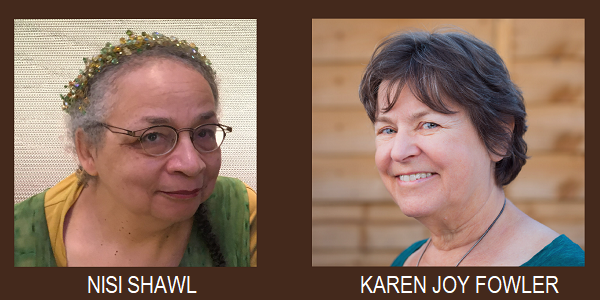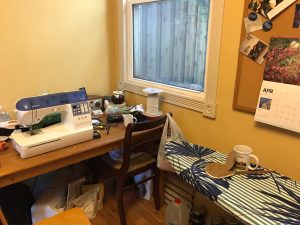A tweet is going round to encourage people to enrol to vote. It suggests that if they don’t, they are fated to be gently mocked by the Australian Electoral Commission (AEC). This tweet suggests that maybe, just maybe, Australia might be a bit different to other countries. We’re only talking about a small portion of potential voters not enrolled, after all. 97% (and maybe a fraction more) of people who were eligible to vote were enrolled before the election was called. This is a higher % than usual, but not crazy high.
The thing is… Australians vote. It’s compulsory to vote, but, if we really wanted, we could return blank ballots. Nothing’s stopping us. We take an exceptional level of responsibility for government in this way, and the big question is, every election, whether the object of our vote has lived up to expectations. Accountability is that much higher when it’s not 30% of those who can vote, nor 60%, but nearly 100%.
What is at stake this election is whether we live up to our own responsibility and judge fairly. Last election enough people fell for promises (that didn’t eventuate) and trusted that nothing critical was being hidden (alleged rape by a politican turned out to be the thing that was hidden) that we voted in Scott Morrison. On May 21, nearly 100% of Australian voters will be deciding if this is worth doing again or if it’s time to vote differently. The LNP have, historically, been in power more often than any other party, which makes it their election to lose this year.
Given we almost all vote, a lot of the issues that apply in other countries are simply irrelevant. It means I can get straight to the nitty gritty of what we are voting for, how we vote, and how those votes are counted.
Australia is a federal government. The national elections rest, therefore on our regions. We fill in two ballots on election day. Let me walk you through them both.
Lower House: House of Representatives
The Members of Parliament (MPs) are chosen by a really straightforward ballot system. Australia is divided into electorates and those electorates are determined by the Australian Electoral Commission according to population (and to avoid gerrymandering). Candidates nominate for an electorate and try to persuade voters to put them high on the ballot.
The actual ballots contain all the names of the candidates, and we (the voters) have to number each and every box. We don’t chose our favourite person and walk away. We put all the candidates in our preferred order. Parties give out ‘How to Vote’ papers, that help their followers choose an order the party like.
I like to say that how the votes are counted is simple, but that’s because I’ve known it all my life. If a candidate gets over half the vote, then it really is simple: they’re elected. If no candidate gets over half the vote, then the candidate with the fewest votes is dropped from the list and the 2nd choices of those voters are added to the numbers of votes for the remaining candidates. The dropping of someone and reallocation of their votes continues until someone wins. In this system, first preferences are only reliable in some electorates. Quite a few MPs win their position from the distributed preferences of voters who had other first choices. What I love about this system is that more of our votes count, especially in an election like this one where many voters are reconsidering their traditional choices.
Some voters are not as enthusiastic as I am. They do a donkey vote or a reverse donkey vote. A donkey vote is when you start from the top with #1 and simply number down. Because donkey votes can change a very narrow result, the AEC has techniques in designing the ballot that will reduce this effect. (Donkey votes don’t work as well for Senate ballots.)
The leader of the party that wins the most votes in this House becomes Prime Minister (PM). They lead the country.
The Queen is technically the Head of Government and an appointed Governor-General acts on her behalf in the everyday technical things that must be done by the Head of Government, but the Prime Ministership is where the real power lies. The Governor-General can sack the PM, but that doesn’t happen often. Let me give you a video of an important moment in our history: https://www.youtube.com/watch?v=SXq056TJhU4&t=2s The moment where Whitlam declared his view of his sacking is now part of our deep cultural selves, and his statement beginning ‘Well may we say “May God save the Queen”…’ is one of the great one-liners in our history. You can buy mugs emblazoned with it, at the Museum of Australia.
Senate
The Senate is our upper house (like the US or Canadian Senate, in that way, and historically, a modified version of them) but its chief role is accountability. It’s very strong on research, on checking budget and on investigating propose legislation and how the practice of government is carried out.
Entirely irrelevantly, when I was a public servant I was never allowed to attend any of the Senate Estimate Committee sessions. Technically I was senior enough, but at that time there was a senator who went above and beyond the call of…something. She investigated private lives of key public servants and when they turned up to answer questions about the portfolio, asked them about their failed marriages. Way more senior people presented that material at that time, and answered those questions – the reasoning was that Sen. Bishop had already done her worst to them. This led to way less effective Senate Estimates than earlier or later, and to different career trajectories for public servants and less interchange between Parliament House and the public service. I watched from my safe desk and decided that ethics were practical as well as being good for all the philosophical reasons.
That’s enough detour!
How are Senators elected? Every State elects twelve senators, and the Northern Territory and the Australian Capital Territory (the ACT is mostly Canberra, the capital) each elect two. Other parts of Australia (we have so many islands!) vote with the appropriate State or Territory. Norfolk Island (which is where the descendants of the Bounty mutineers ended up) votes as part of the ACT, for example.
This is not proportional. Tasmania, with a population of around 540,000 elects twelve Senators and the ACT and its adjunct places, with around 430,000 people elect two Senatorss.
The Senate ballot is fun to fill in but painful to explain. I’m going to send you to the AEC, because they have pretty diagrams: https://aec.gov.au/Voting/How_to_Vote/Voting_Senate.htm
I always fill in below the line. I also fill in every single box even though I don’t have to. I begin at the bottom and put the people I never want to see in a position of responsibility right down the bottom and I work up from there. When I talk about deciding who will get my #1 and #2 for the Senate, it’s misleading, because I investigate all the candidates.
The votes are counted in a way that is just a tad confusing to anyone new to it. The AEC uses a formula to determine a Senate quota (Number of formal ballot papers / (Number of senators to be elected + 1)) rounded down + 1 = Senate quota)
If a candidate gets a quota or more of first preferences, then they are elected. The votes that are over the quota are theoretically transferred ie they will be counted again, towards another candidate. Except that this isn’t fair. It’s impossible to tell which votes to count for first and which to transfer. So everything is transferred… but a reduced rate ie each vote is worth a bit less, but all votes are counted for the #2 choice. Unsuccessful candidates are excluded, exhausted votes are dropped (an exhausted vote is when a ballot has run out of marked choices – they can’t be transferred down the line if there is no candidate to transfer them to). This system continues until the correct number of Senators is elected. If you want to fully understand this system (which I love, but which I admit is complex) then the best place to look is the AEC website: https://www.aec.gov.au/Voting/counting/senate_count.htm
Because we have compulsory voting, voter education is terribly, terribly important in Australia and an important part of the AEC’s role. The above-the-line and below-the-line options for voters for the Senate gives me the perfect excuse to show you how the AEC educates voters: https://aec.gov.au/Voting/How_to_Vote/Voting_Senate.htm
House of Representatives votes are usually counted by midnight on the night of the election. Not always. A complex result can take a few days longer, because some electorates need extra checking and recounting. The Senate always takes longer to count.
Now you know about counting. How about the elections themselves. Here’s a newspaper summary of things, so you can skip reading my undeniably strange prose if you want (this is a long post!): https://thenewdaily.com.au/news/politics/australian-politics/federal-election-2022/2022/04/10/election-called-what-net/
For those of you still with me, the House of Representatives has 3 year terms and the Senate 6 years for State Senators and 3 for Territory. Half the Senate is elected every three years. When there’s a Double Dissolution things are different. Here’s a short paper on Double Dissolutions: https://www.aph.gov.au/About_Parliament/House_of_Representatives/Powers_practice_and_procedure/00_-_Infosheets/Infosheet_18_-_Double_dissolution The important thing right now is that 21 May 2022 is a normal election – there was no Double Dissolution. This means that the States are only voting for six Senators each. At a normal election, we vote for both Houses: the whole of the lower House and just over half the Upper. That’s what happens on 21 May.
Our elections are always on Saturdays (religious Jews have to do early votes) and are declared no fewer than 33 days before the election itself. There is no year-long campaign trail. It’s generally about six weeks.
21 May is the last possible day in this current electoral cycle: our Prime Minister was cutting it very fine. And he had until this coming Thursday to call it and called it on Sunday, so it’s not the shortest formal campaign, but it comes close.
We are now in caretaker mode, and the government can’t do anything new. The big thing this year is that the Prime Minister made a whole heap of appointments before he called the election. This isn’t typical of Australia (though it happens, it normally doesn’t happen on such a scale) – but Morrison is very influenced by the USA.
We have live vote counting from the moment the polls shut (6 pm) on the night of the election.
It’s a great spectator sport. We used to have tally rooms in Canberra and anyone local could just turn up and run into nervous politicians and stand around behind the ‘rooms’ the TV broadcasts used and read the autocues along with the presenters, then turn around and watch the numbers being manually put up on the big boards. That system no longer operates and I miss it, but you can still watch the whole thing on various free-to-air TV stations. On some stations it’s updates only, but on several the broadcast is from 6 pm until midnight or until the formal speeches are over, whichever comes first. Even on a landslide year, things aren’t over until at least 9 pm, because of the time differences between our east and west coast.
Not all Australians take the elections seriously, but enough do that any count dominates TV viewing on that Saturday night. Antony Green is the expert on the national broadcaster, and representatives of the major parties are called in to give commentary. In the right year and watching the right TV station, it’s possible to see the moment the commentators realise that they have lost their own seat.
Let me leave you with one last page from the AEC. This is the information they gave reporters for the last election. It covers some of the areas I didn’t talk about here. Why didn’t I talk about it here? This post is already 2,000 words long and it’s 2 am here and I am going to sleep! https://www.aec.gov.au/media/files/aec-federal-election-reporting-guide-digital.pdf
![]()

![]() is kind of self-explanatory.
is kind of self-explanatory.

 Originally published in 2011
Originally published in 2011
 At best, uncertainty is a difficult emotional state. We live in a world of routines, reliable cause-and-effect, and pattern recognition. We don’t need to test gravity every time we take a step, which is a good thing. We make assumptions about how people we know well (or people in general) are going to behave, based on their past actions. (Erratic behavior, whether due to mental illness, substance abuse, or misreading body language, can be traumatic, especially for children.) We anticipate many things, from the functioning of traffic lights to our own digestion to the reaction of a deer suddenly come upon in a meadow, based on our understanding of “how things work.” We use these strategies all the time without thinking about it. Having a reasonable sense of how events will unfold frees up mental (and physical) energy and gives us a sense of control over our lives.
At best, uncertainty is a difficult emotional state. We live in a world of routines, reliable cause-and-effect, and pattern recognition. We don’t need to test gravity every time we take a step, which is a good thing. We make assumptions about how people we know well (or people in general) are going to behave, based on their past actions. (Erratic behavior, whether due to mental illness, substance abuse, or misreading body language, can be traumatic, especially for children.) We anticipate many things, from the functioning of traffic lights to our own digestion to the reaction of a deer suddenly come upon in a meadow, based on our understanding of “how things work.” We use these strategies all the time without thinking about it. Having a reasonable sense of how events will unfold frees up mental (and physical) energy and gives us a sense of control over our lives. More than two years ago (around the Ides of March) and exactly like everyone else in the US, I was at home sheltering-in-place, dealing with both sudden too-much-time and the anxiety of a rapidly-spreading pandemic. My own way of dealing was to start sewing.
More than two years ago (around the Ides of March) and exactly like everyone else in the US, I was at home sheltering-in-place, dealing with both sudden too-much-time and the anxiety of a rapidly-spreading pandemic. My own way of dealing was to start sewing.